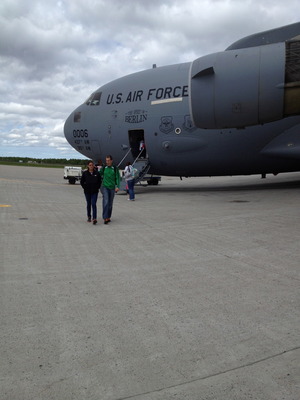Teaching Physical Education for 33 years, I saw many changes in how to deal with Special Needs Students. For a long time in the early 70’s, Special Needs Students (Special Education) were kept separated from regular Physical education Classes. This was done for two major reasons. One, to avoid students from making fun and taking advantage of Special Needs Students. Two, to give the Special Needs Students the time they deserved.
In the early 1980’s. the shift went to try and move Special Needs Students, that were ready to socially adjust, into the same classes with regular students. Most classes remained this way until the mid to late 90’s. At that time, it was felt that all Special Needs Students should be incorporated into the regular classroom. It didn’t matter if both groups could handle the situation or not. That is the way it was. Special Needs Students were to be treated no different than regular students.
For the teacher of the class, this created some major problems. Especially in areas of skill assessment. Each student had to be measured to the norm for those skills but, in accordance to their improvement or skill development. Although not easy to do, I finally was able to fairly evaluate students based strictly on skill improvement per individual.
The major issue with that, would Special Needs Students being accepted socially. Nobody wants to be considered “Special”. If regular students would try to work with the Special Needs Students, the Special Needs Students felt that they were being singled out because of their lack of skills both physical and social. To get around this problem, I made some class adjustments. In large groups of play like Soccer, all students were treated exactly the same. However, when it came to activities with a lesser number of students, I had to integrate better skilled players with the Special Needs Students.
For example in Tennis, I would place a good skilled player with a Special Needs Student and have them play a doubles game that had the same type of team across from them on the court. This helped to maintain balance. I assessed their improvement as a twosome not as individuals. I discovered that this developed strong relationships among most partners. This even eventually lead to strong social relationships between them and their teammates. Special Need Student would work to please their partner and the Regular Student would work hard to encourage their partner.
From time to time, I would switch them around. I did this to get the Special Need Students to learn and make social adjustments to their new partner. Sometimes their would be conflicts among the students because they just didn’t feel as comfortable as they did with their regular partner. If the students could not make the adjustment, then I had them switch back to their regular partners. However, I always told them that they were being shifted back because of them being uncomfortable with their new partner. They had to know the truth about what I was doing and why.
I discovered that both groups would have this same problem of adjustment, not just the Special Needs Students. In my smaller classes, we tried to attack this problem and let the students work it out. To my surprise, they did.
I have taught classes in all the ways mentioned above. The bottom line is that kids just want to have fun. When you try to make things to serious, problems set in. This is especially true when it comes to serious competition. Competition is great because that is the way it is in the “real world”. However, learning to socially coexist is just as important.
The major issue in Physical Education class shouldn’t be assessment of skill development. Yes, that is important when it comes to evaluation of a student’s progress. However, I believe that accepting each other socially is more important to the successful progress of each student. Everyone wants to belong equally.



